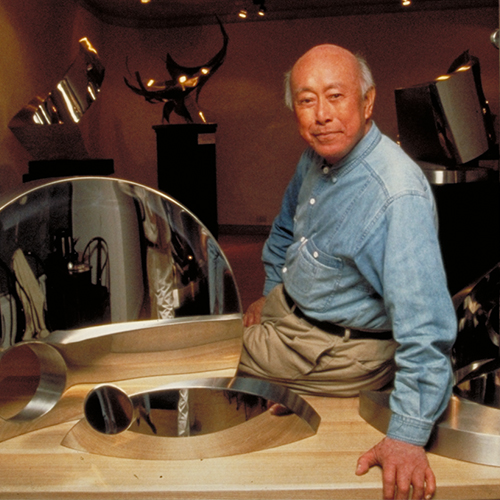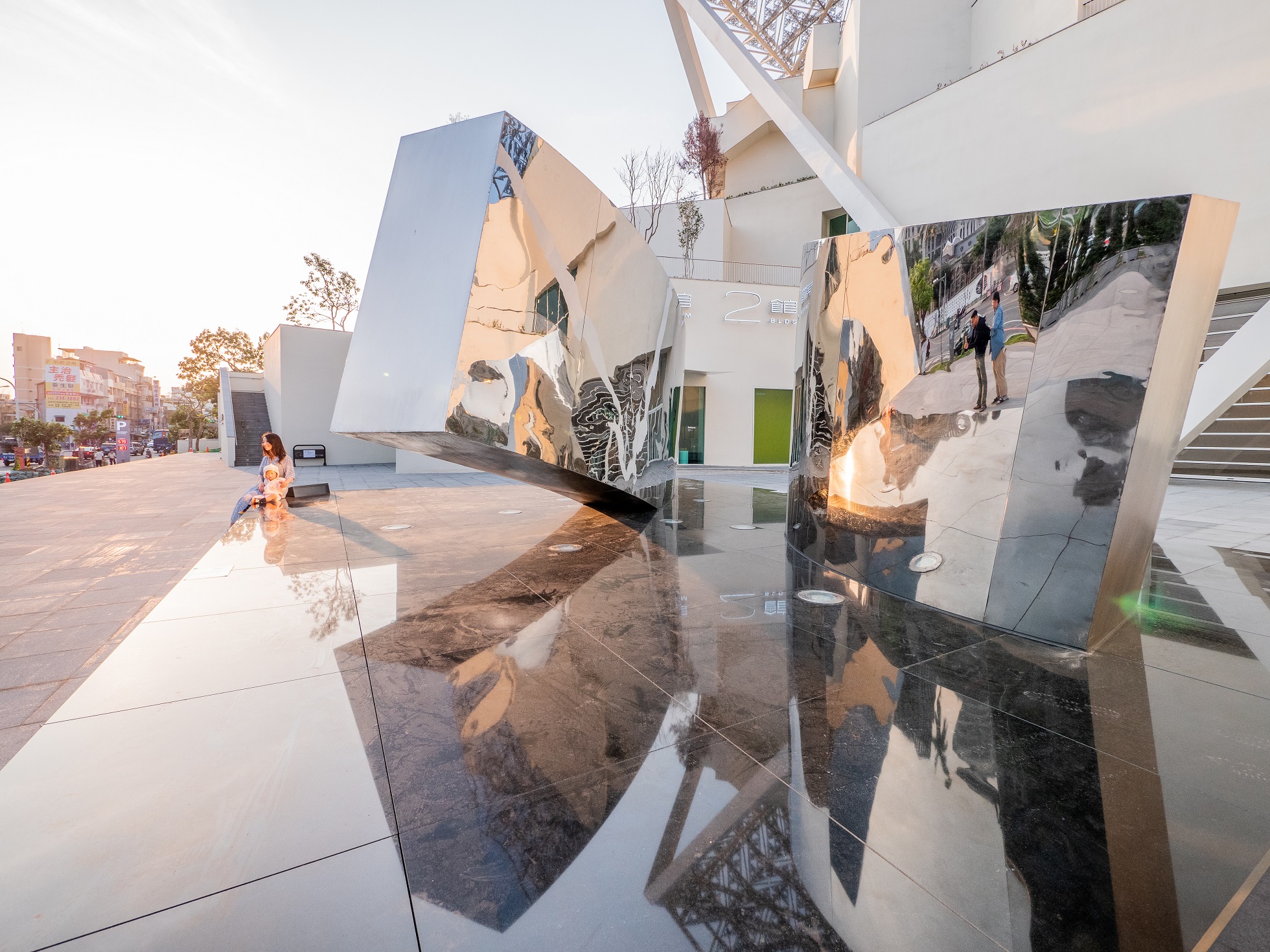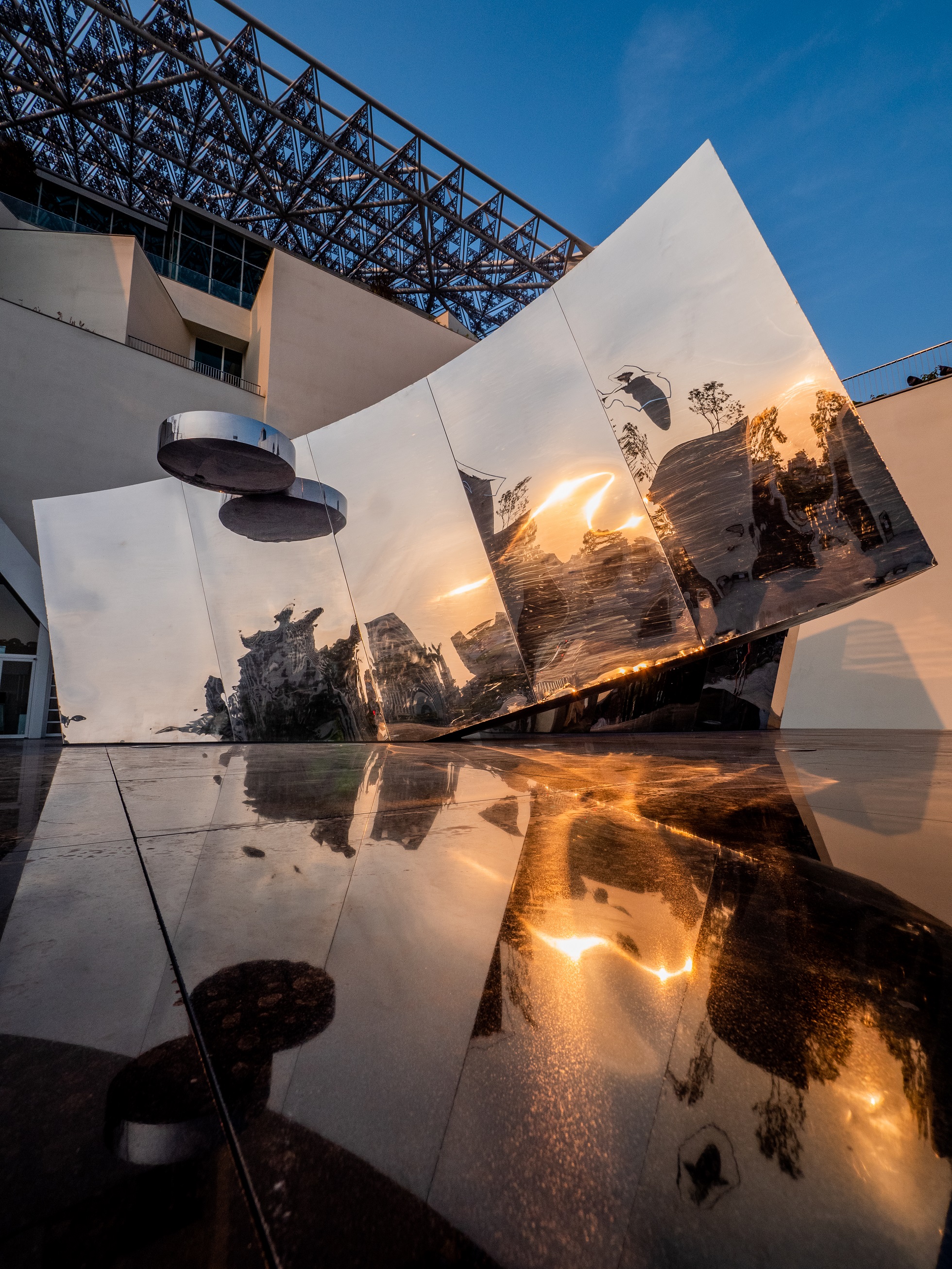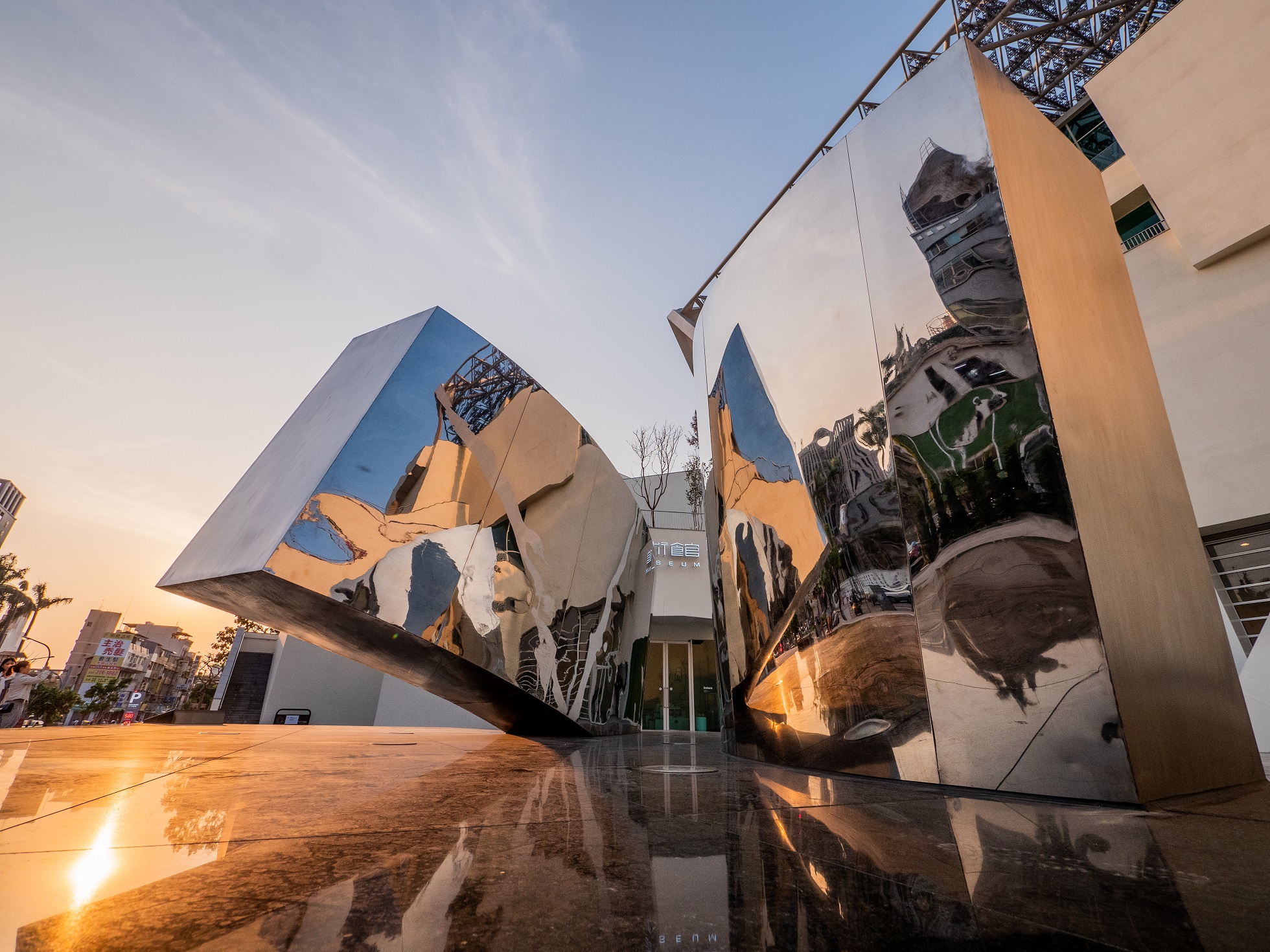Yang YuYu楊英風

《分合隨緣》不鏽鋼景觀大雕塑,兩件一組的造型,凹凸鏡面的變化虛虛盈盈,上方圓碟,在鏡面的反映中,象徵細胞分裂再生,萬物繁衍不息,亦如太空訪客,在宇宙中會合分離,傳達訊息。隨著角度、位置的差異,映照出四周不同的景象,有若心鏡反射:世間萬事聚散分合、虛實盈虧,皆隨緣而變。
Large-scale stainless steel landscape sculpture “Shadow Mirror” is composed of two parts. The curves and mirror surface are rich and abstract, with a disc placed on top of them. In the reflection of the stainless steel mirror, the disc represents the division of cells and the circle of life. It also looks like a visitor from outer space, trying to send a message through. Watching from different angles, the artwork can reflect different aspects of the surroundings, just like our hearts reflecting our thoughts as people come and go in our lives.
本作完成於1983年,是楊英風不鏽鋼「宇宙系列」作品之一。楊氏對浩瀚無垠的宇宙自有一番體認,於是反映在他一系列的不鏽鋼雕塑作品上。不鏽鋼是楊氏最喜歡的材質,特性是堅硬,具有強烈的現代感,並代表了現代科技的進步,以不鏽鋼材質作雕塑,那種磨光的鏡面效果可以反映出周遭景物,轉換成如夢似幻的影像,也符合宇宙萬物虛虛實實的意象。
Shadow Mirror was created by Yang Yuyu in 1983 as one of the artworks in the Universe series. Yang had his own interpretation of the universe, reflecting in the stainless steel pieces of the Universe series. Stainless steel was Yang’s favorite medium with its toughness and its sense of modernization. It somewhat represents the progress of modern technology. The mirror surface of stainless steel sculptures can reflect the surroundings and turn them into magical images, like the abstract and substantial reality in the universe.
1983年此作曾經陳列於臺北市立美術館前庭,1984年南移至臺南市立文化中心假日廣場(現臺南藝術中心)暫置;2018年安置於臺南市美術館2館園區。
In 1983, Shadow Mirror was placed in front of Taipei Fine Arts Museum, and then transferred to Tainan Cultural Center in 1984. In 2018, it was placed in Tainan Art Museum Building 2.
1997 逝世於臺灣新竹
1979 召開雷射推廣協會會議,並且成立大漢雷射科藝研究所,將雷射藝術及技術引進國內
1970 年代提出「景觀雕塑」此一開創性的觀念
1960 年代在義大利旅居三年的經驗,使楊英風體認到東、西文化及美學差異
1959 法國《美術研究》雙月刊譽為「指導世界未來雕塑方向之大師」
1926 出生於臺灣宜蘭縣
1997 Died in Hsinchu, Taiwan
1979 Promoted laser art and introduced the technology to Taiwan
1970 Put forward the groundbreaking idea of “Landscape Sculpture”
1960 He experienced the differences of culture and aesthetics with three years of residency in Italy.
1959 French Bimonthly Art Magazine reviewed him as “a master who directs the trend of sculpture in the future”.
1926 Born in Yilan, Taiwan


雕塑/公共藝術
1990 《飛龍在天》元宵節主燈,於台北中正紀念堂展出
1990 為亞運製作不銹鋼大型景觀雕塑《鳳凌霄漢》,永久陳列於北京國家奧林匹克體育中心
1977 負責美國加州法界大學校園景觀設計及《釋迦牟尼》佛像雕塑,並且擔任法界大學藝術學院院長
1970 代表臺灣前往日本大阪萬國博覽會,負責設計製作中國館前之景觀雕塑作品《鳳凰來儀》,首次與該館的建築師貝聿銘合作
2004 為日月潭教師會館創作《自強不息》、《怡然自得》等大型浮雕
Sculptures/ Public Art
1990 “Flying Dragon” was represented as the main lantern in Chiang Kai-shek Memorial Hall during Lantern Festival.
1990 He created “Phoenix Scales the Heavens” for Asian Games. It is permanently displayed in National Olympic Sports Center, Beijing.
1977 He was in charge of the campus landscape design and the sculpture “Sakyamuni” in Dharma Realm Buddhist University. He was also the dean of the college of art in the university.
1970 He attended Osaka World Expo as the representative of Taiwan, in charge of the design and production of landscape sculpture “Advent of the Phoenix” in front of the Chinese Pavilion, coordinating with architect Ieoh Ming Pei.
2004 He created large-scale relief “The Sun” and “The Moon” for Sun Moon Lake Teacher’s Hostel.
獲獎紀錄
1996 受頒成為英國皇家雕塑家協會第一位國際會員
1993 獲頒國家行政院文化獎章,肯定其終身文化成就
1991 獲第二屆「世界和平文化藝術大獎」
Awards
1996 The first international member of the Royal Society of British Sculptors
1993 National Cultural Award for his lifelong cultural achievement
1991 World Peace Culture Award
